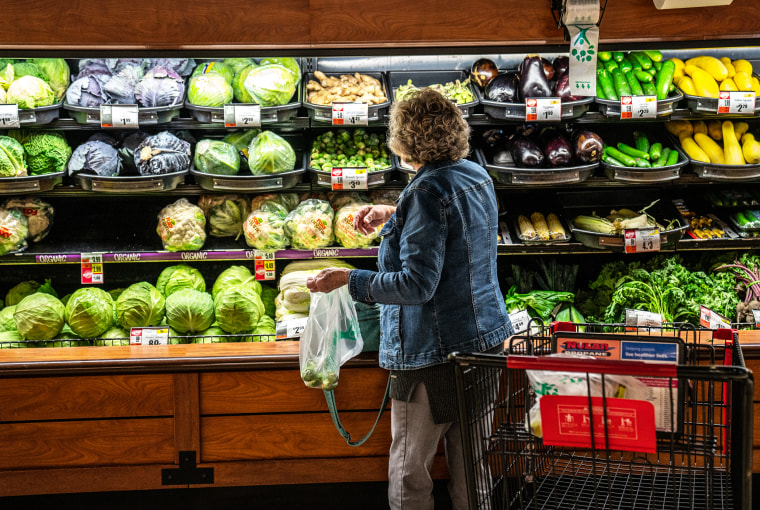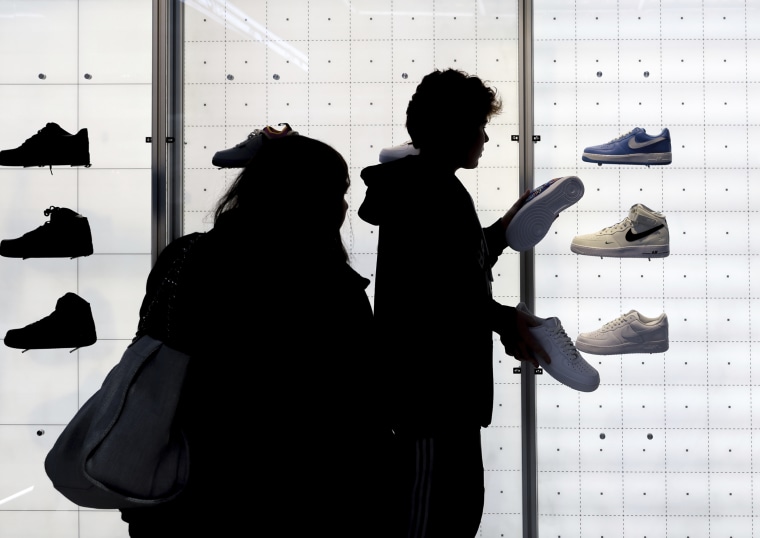The U.S. government is expected to hit its statutory borrowing limit as soon as June 5, little more than a week away.
As of Friday morning, there was still no sign of an imminent resolution, and lawmakers and President Joe Biden were expected to depart Washington D.C. for the Memorial Day holiday.
By the afternoon, the Treasury Department moved its "X-date," the day on which the U.S. would default on its debt, from June 1 to June 5 to give negotiators some breathing room to reach a deal.
Still, people all over the nation are now wondering what will happen to their personal finances if lawmakers don't reach a deal before the U.S. runs out of money to pay its bills.
Most vulnerable Social Security recipients could be affected first
Based on the Social Security Administration's payment schedule, a June 5 debt default might actually protect beneficiaries from the potential of delayed checks and direct deposits.
Individuals receiving disability payments are slated to receive their monthly payments June 1, while beneficiaries aged 88 and older are expected to receive their payments June 2.
If the Treasury Department is unable to successfully prioritize payments to Social Security recipients, the consequences for these groups could be devastating, according to Dan Adcock, director of government relations and policy for the National Committee to Preserve Social Security and Medicare, an advocacy group.
"Those folks will be particularly hard-pressed to pay for basic necessities like rent, utilities, and out-of-pocket medical costs," he said.

A spokesperson for the Treasury Department referred an inquiry about prioritization to comments Secretary Janet Yellen has previously made on the matter, including a May 7 interview with in which she spoke of what would happen when the U.S. could no longer pay its bills.
"This would be really the first time in the history of America that we would fail to make payments that are due and whether it is defaulting on interest payments that are due on the debt or payments due for Social Security recipients or to Medicare providers, we would simply not have enough cash to meet all of our obligations," Yellen said.
Beyond that initial group of payees, the Social Security Administration's monthly payments calendar suggests there is a bit more breathing room for other beneficiaries, providing that lawmakers reach a deal beforehand; the next beneficiary payments aren't expected until June 14.
The debt default picture is also cloudy for individuals who rely on Medicare and Medicaid to pay medical bills, Adcock said. A spokesperson for the American Medical Association said it had no comment about what it suggests doctors should do in the event of a debt default.
The Centers for Medicare and Medicaid Services (CMS), which administers those government health programs, told NBC News earlier this month, “Defaulting on the national debt would severely damage the crucial health care programs millions of Americans rely on."
"While the precise impact on CMS’s programs depends on many uncertain factors, it is clear that if the federal government is prevented from making good on its promises, there would be significant consequences for Medicaid, Medicare, and the Affordable Care Act Marketplaces.”
‘Which bills would they pay?’
According to Howard Gleckman, senior fellow at the nonprofit research group Urban-Brookings Tax Policy Center at the Urban Institute, the full mechanics of how government services would manage a default are almost impossible to know, because there is no playbook for handling such a situation.
“We don’t know how [the] Biden admin would treat a default,” he said. “Which bills would they pay?”
Yellen has already warned that there is no easy way to reprogram the government’s payment systems to favor one set of recipients over another.
“Treasury systems have all been built to pay all of our bills when they’re due and on time, and not to prioritize one form of spending over another,” she said earlier this year.
Wells Fargo economists said in a recent note to clients that even if a payment prioritization plan were implemented, such a plan “would be entirely experimental and would still come with a litany of legal, technical, economic and political challenges.”
“The economic impact of a default is highly uncertain since that has never happened previously, but economic modeling suggests the fallout could be quite severe,” they wrote.
The consequences are already playing out
Since Yellen announced that a debt default could happen within the first few days of June, short-term U.S. borrowing costs have soared as investors demand greater return for the risk that they won't be paid on time.
This was predictable: In fact, the U.S. did default once, by accident. In 1979, a series of events including the failure of word-processing equipment caused a temporary delay in payments to investors redeeming U.S. Treasury bills, Reuters has reported.
Afterward, the cost of borrowing money for the U.S. increased by 0.6%, the wire service said, adding that an academic paper published a decade later argued that the ratcheting up of borrowing costs for the U.S was permanent.
If the U.S. were to default again, the result would be the same, said Gleckman.
“The primary effect would be interest rates going up significantly,” Gleckman said. “And they’re already going up quickly and steeply. What this would do is accelerate movement toward higher interest rates.”
As many consumers have learned since the Federal Reserve began its campaign last year to make borrowing more expensive in a bid to slow inflation, higher interest rates affect everything from credit cards to auto loans, student loans and mortgages.
Meanwhile, businesses are likely to already be experiencing greater difficulty getting loans and hiring more workers, Gleckman noted.
Many commercial interest rates have already gone up in recent months in the wake of the collapses of Silicon Valley Bank and First Republic Bank.
The debt default deliberations also caused ratings agency Fitch to place the U.S.’s triple-A credit rating on watch for a potential downgrade.
“The brinkmanship over the debt ceiling, failure of the U.S. authorities to meaningfully tackle medium-term fiscal challenges that will lead to rising budget deficits and a growing debt burden signal downside risks to U.S. creditworthiness,” Fitch analysts wrote this week.

